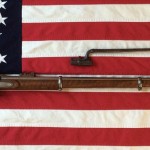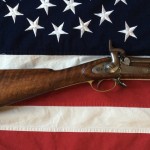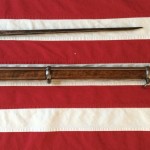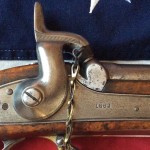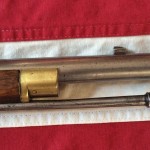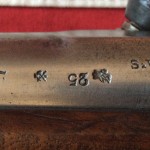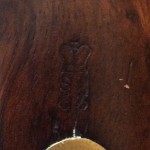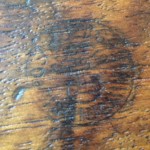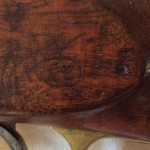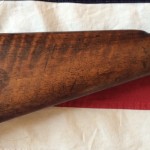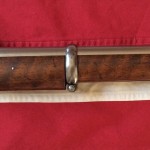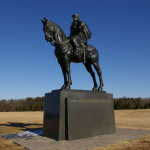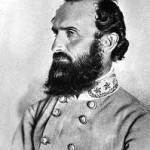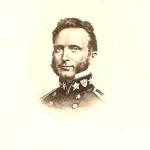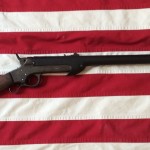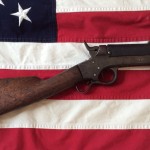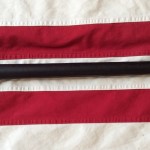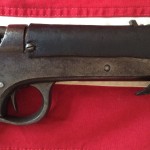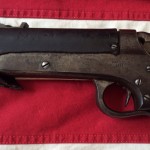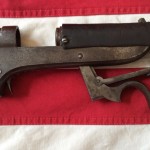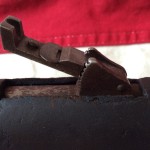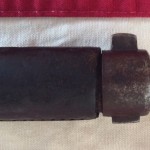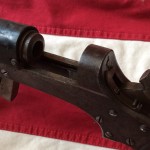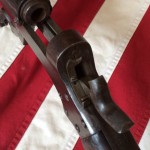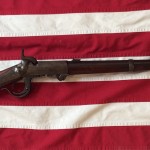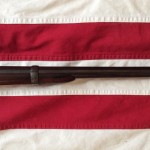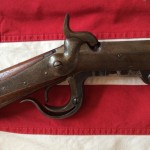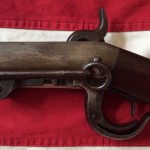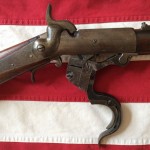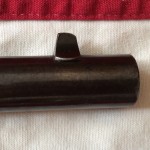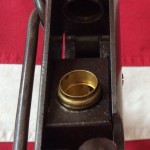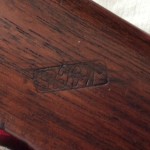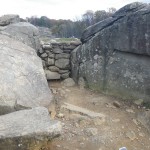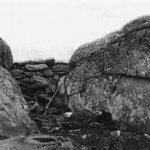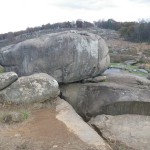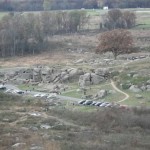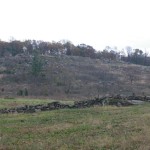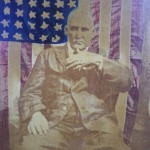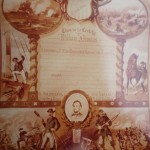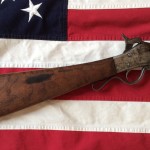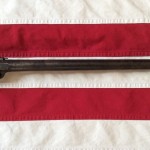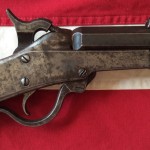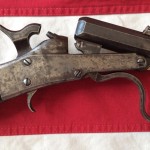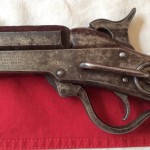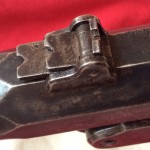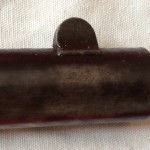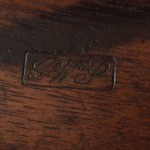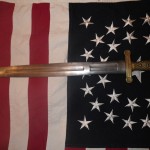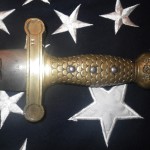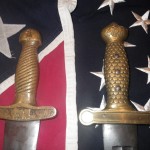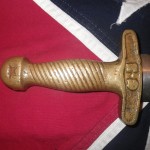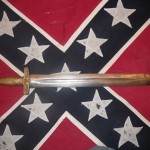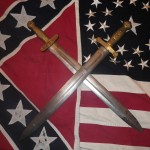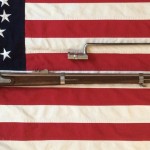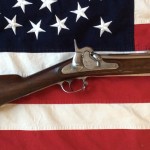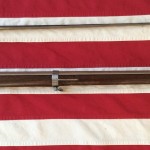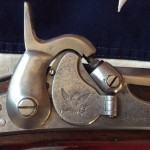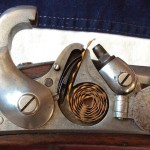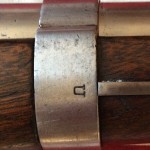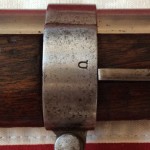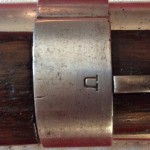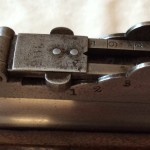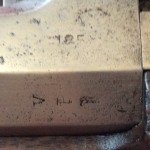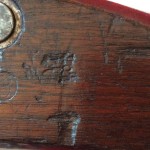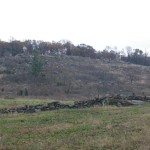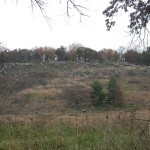- British P-1853 Type III, 1862 Enfield
- P-1853 Type III rifle Musket Enfield, Tiger Wood Stock
- British Enfield P-1853 Type III & Socket Bayonet
- P – 1853 Type III British Enfield, 1862 Lock Plate
- P-1853 Type III Rifle Musket Enfield, Front Sight
- British Enfield Rifle Musket, Birmingham Proofs
- Schuyler, Hartley & Graham #3 Import Stamp
- Joseph Wilson Gun Maker, Birmingham Stamp
- P-1853 Enfild Rifle Musket, Cartouche
- British Enfield Rifle Musket, Tiger Wood
- P-1853 Type III Enfield, Rear Sight
At the outbreak of the war the Enfield was considered the rifle of choice. The Enfield was the first production gun to use rifling in its barrel and it fired the .577 caliber Pritchett minie ball (which was innovative for its time) and considered by many the prettiest rifle made with its brass accents.
There were many private contractors manufacturing Enfield’s but the better quality Enfield’s were made by the Birmingham Small Arms Factory and the London Armory Arsenals. The reason for this was that these two companies made muskets that had interchangeable parts, the dozens of other gun making companies made muskets that looked the same but the parts would not interchange from one gun to the other. This did not fare well in battle, as one musket failed you could not take parts from another and fix it.
So that takes us to the 1862 Enfield in my Civil War Arsenal. I purchased this musket a few years back on Gun Brokers Auction Web Site. The fellow that was auctioning musket did not know much about it, other then it was old. He was selling off a collection of antique weapons for someone. When I first saw the gun I thought there was no way I’d win the auction, thinking that everyone interested would be jockeying for position. However I did have the winning bid and I think I got it for a great price.
This Enfield is super clean with hardly a mark on it. The stock is absolutely stunning with its tiger wood finish and the barrel and hardware are almost flawless. It has the Birmingham stamp on the right side of the stock with the maker’s name of Joseph Wilson. On the top of the stock by the tang of the butt plate is the stamp of Schuyler Hartley and Graham, or SH over G3. I think 3 and 5 are the most common numbers found on these imports with 1, 2, 4 being less common.
Schuyler Hartley and Graham had Military Goods, stores in N.Y.C. at 19 Maiden Lane and 22 John Street, and are considered by many to be the first store to sell Military accessories, kind of like a modern day Army Navy store.
Because they already had connections overseas as buyers of military accessories the U.S. Government and State Governments turned towards them to purchase weapons (rifles, pistols, swords, etc…). Most of the Enfield’s they purchased were bought for the State Militia’s of Massachusetts and New York.
However some of the weapons that S.H & G sold were sold over the counter to soldiers who wanted better equipment then the Government was issuing, and all officers were required to purchase their own uniforms and swords, so during the war S.H.& G. was the perfect tool for soldiers and officers alike to purchase quality weapons and accessories.
But we know this Musket wasn’t purchased by a soldier over the counter. First of all if a soldier wanted to upgrade his Government Issue weapon he would have bought a breech loading rifle or carbine. But the most telling sign is the Government cartouche on the left side of the stock, which tells us this was imported by S.H. & G for the U.S. Government, very neat stuff. I love it when the markings on the weapon tell the story.
This Enfield is a beauty I hope you enjoy it as much as I do.
Any questions about this posting or any of the other postings at the Civil War Arsenal feel free to contact me at civilwararsenal@yahoo.com attm: Gene West

